Rocky Surfaces
Part of Hall of Meteorites.
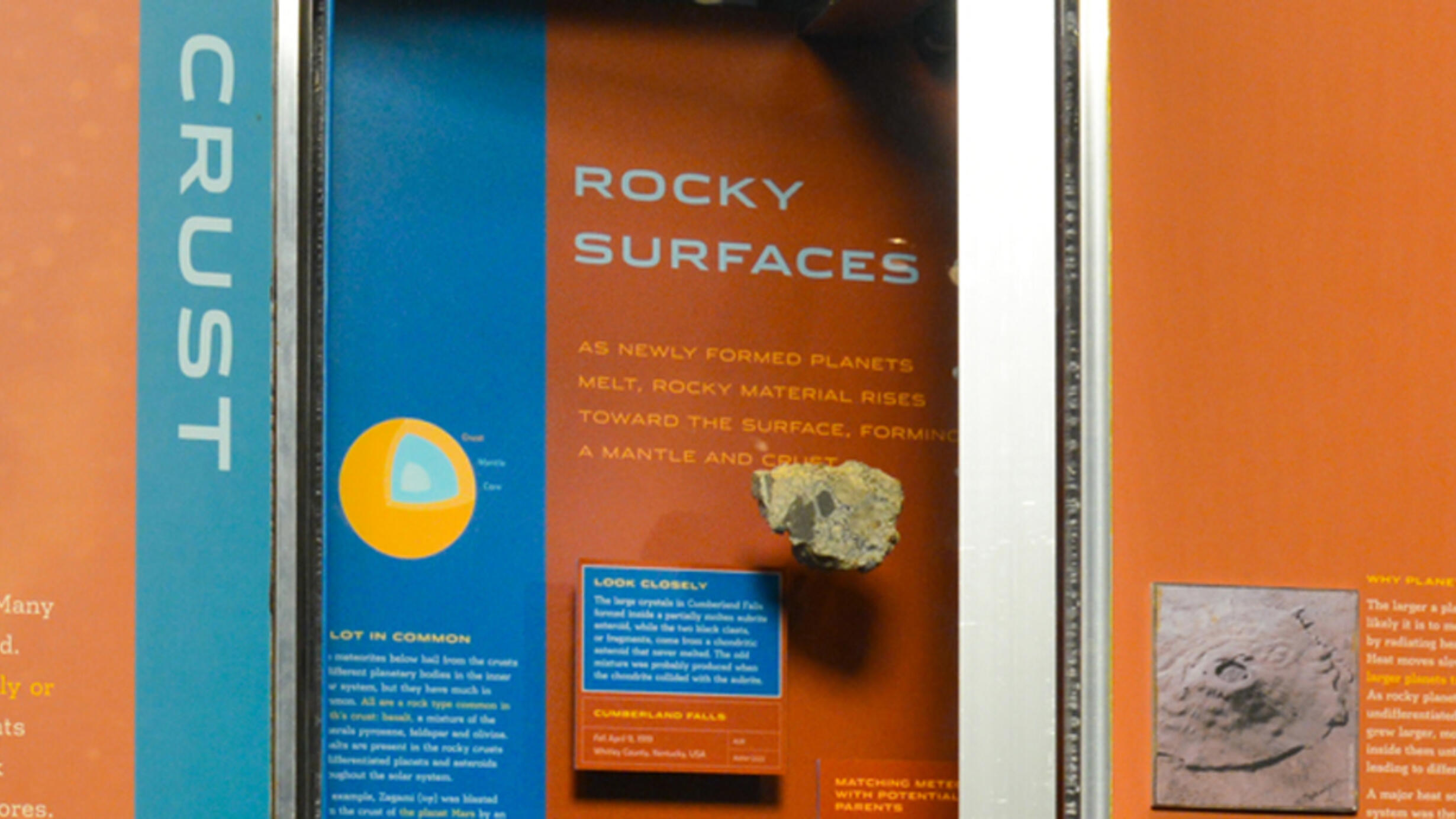
As newly formed planets melt, rocky material rises toward the surface, forming a mantle and crust.
In This Section
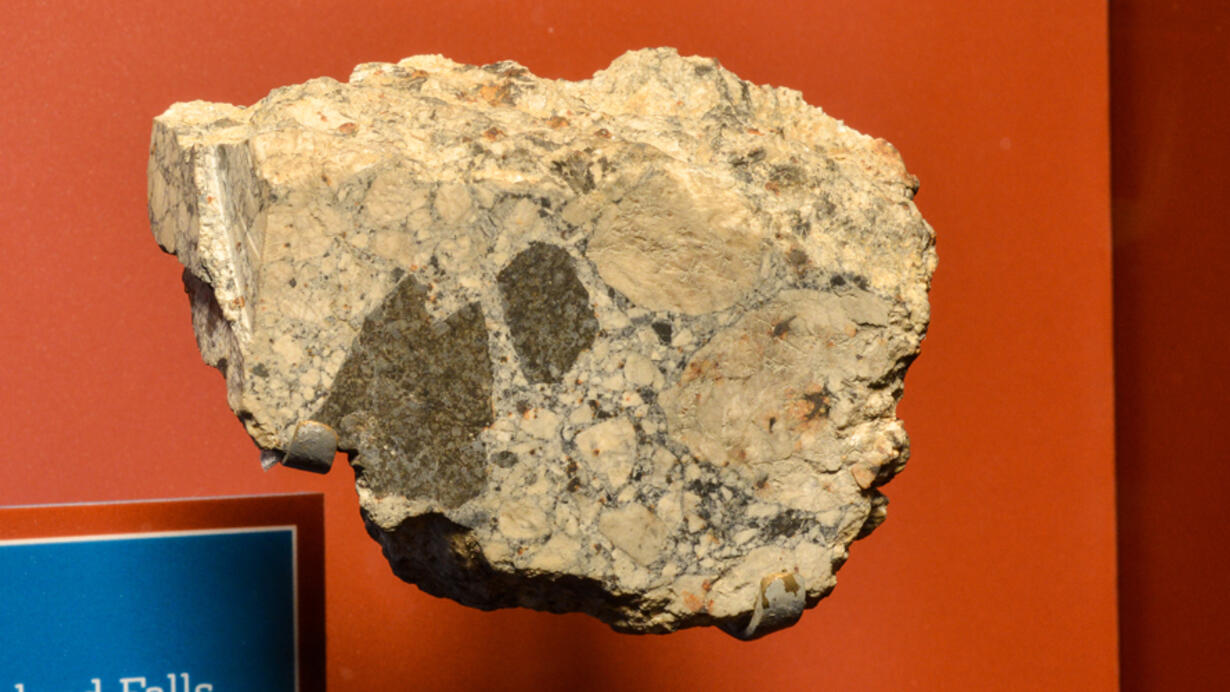
Cumberland Falls
Look Closely
The large crystals in Cumberland Falls formed inside a partially molten aubrite asteroid, while the two black clasts, or fragments, come from a chondritic asteroid that never melted. The odd mixture was probably produced when the chondrite collided with the aubrite.
CUMBERLAND FALLS
Fell April 9, 1919 Whitley County, Kentucky, USA
AUB
AMNH 2222
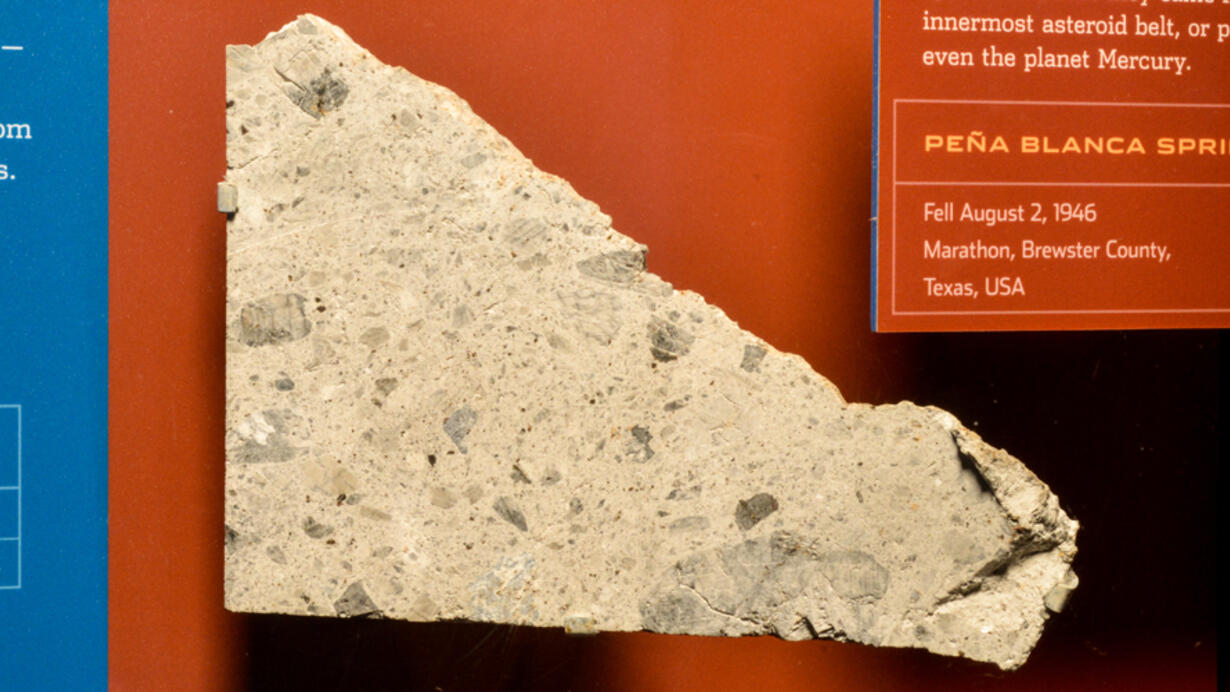
Peña Blanca Springs
Matching Meteorites With Potential Parents
The Peña Blanca Springs meteorite belongs to a group, the aubrites, whose chemical composition has led to speculation that they came from the innermost asteroid belt, or possibly even the planet Mercury.
PEÑA BLANCA SPRINGS
Fell August 2, 1946
Marathon, Brewster County, Texas, USA
AUB
AMNH 2222
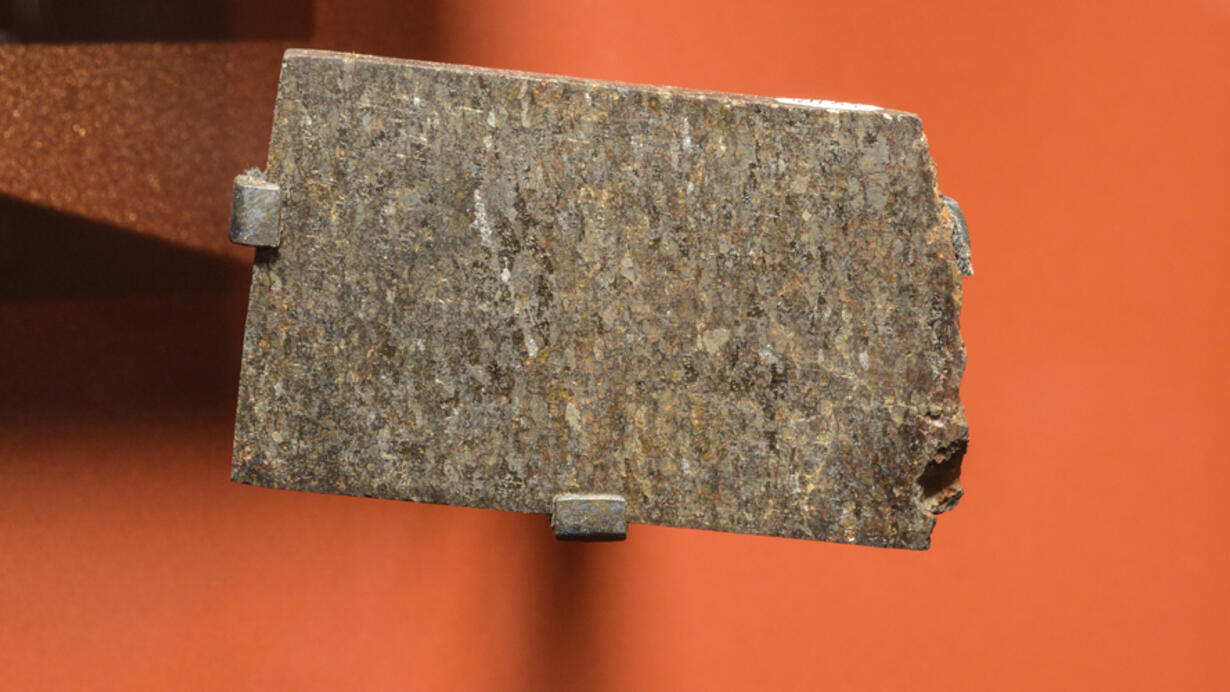
Kenna
Less Melting
Kenna, a ureilite, comes from an asteroid that did not completely differentiate. Instead, it only partially melted, then cooled and crystallized before it could separate into iron and stony parts.
Some ureilites contain primitive particles such as microdiamonds and chondrules that survived partial melting of the surrounding rock. In more fully melted meteorites, no chondrules remain.
KENNA
Found 1972 Roosevelt County, New Mexico,USA
URE
AMNH 4457
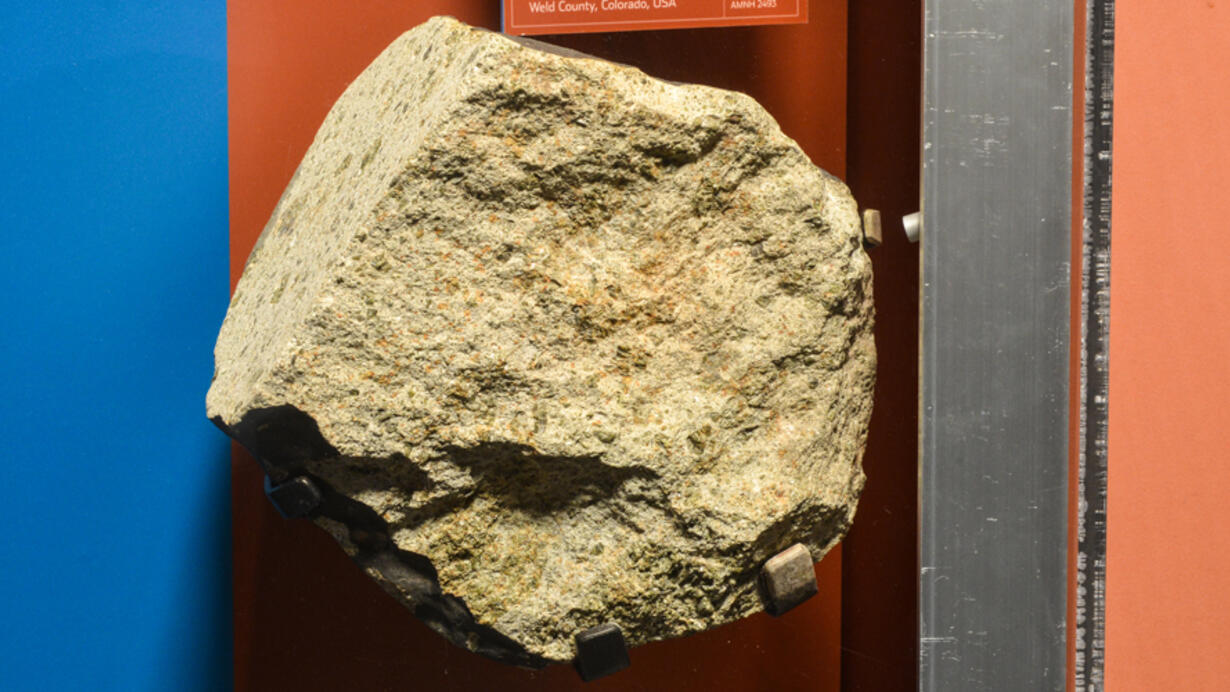
Johnstown
More Melting
The Johnstown meteorite comes from a large asteroid, probably Vesta, that melted and differentiated. It is low in iron, nickel and other elements that sank to the asteroid core. It is also poor in aluminum and calcium, which seeped to the surface in volcanic basalts like the Camel Donga meteorite in this case.
This sample is the "main mass" of the Johnstown meteorite, meaning it is the biggest fragment of Johnstown ever found.
JOHNSTOWN
Fell February 6, 1924 Weld County , Colorado, USA
DIO
AMNH 2493